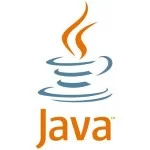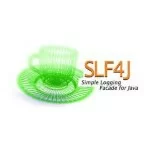MOXy as Your JAX-RS JSON Provider – Client Side
URI
This post will focus on the following URI from the service we declared in the previous post. The following call will return a list of customers that live in “Any Town”.
1 | http://localhost:8080/CustomerService/rest/customers/findCustomersByCity/Any%20Town |
Java SE Client APIs
In the first example we will use the standard Java SE 6 APIs. Some interesting items to note:
- MOXy can directly marshal (line 35) and unmarshal (line 28) collections to/from JSON arrays without requiring a wrapper object.
- There are no compile time dependencies on MOXy (it is a run time dependency).
- The eclipselink.media-type property is used to enable JSON binding on the unmarshaller (line 25) and marshaller (line 33).
- The eclipselink.json.include-root property is used to indicate that the @XmlRootElement annotation should be ignored in the JSON binding (lines 26 and 34).
01 02 03 04 05 06 07 08 09 10 11 12 13 14 15 16 17 18 19 20 21 22 23 24 25 26 27 28 29 30 31 32 33 34 35 36 37 38 | package example;import java.io.InputStream;import java.net.*;import java.util.List;import javax.xml.bind.*;import javax.xml.transform.stream.StreamSource;import org.example.Customer;public class JavaSEClient { private static final String MEDIA_TYPE = "application/json"; public static void main(String[] args) throws Exception { URL url = new URL(uri); HttpURLConnection connection = (HttpURLConnection) url.openConnection(); connection.setRequestMethod("GET"); connection.setRequestProperty("Accept", MEDIA_TYPE); JAXBContext jc = JAXBContext.newInstance(Customer.class); Unmarshaller unmarshaller = jc.createUnmarshaller(); unmarshaller.setProperty("eclipselink.media-type", MEDIA_TYPE); unmarshaller.setProperty("eclipselink.json.include-root", false); InputStream xml = connection.getInputStream(); List<Customer> customers = (List<Customer>) unmarshaller.unmarshal(new StreamSource(xml), Customer.class).getValue(); connection.disconnect(); Marshaller marshaller = jc.createMarshaller(); marshaller.setProperty(Marshaller.JAXB_FORMATTED_OUTPUT, true); marshaller.setProperty("eclipselink.media-type", MEDIA_TYPE); marshaller.setProperty("eclipselink.json.include-root", false); marshaller.marshal(customers, System.out); }} |
Output
Below is the output from running the Java SE client. For those that may have used a JAXB ( JSR-222) implementation with something like Jettison to produce/consume JSON, the following are some interesting items to note:
- MOXy renders collections as JSON arrays.
- MOXy represents the numeric values correctly without quotes (line 26).
- MOXy surrounds collections of size 1 correctly with square brackets (lines 28 and 32).
01 02 03 04 05 06 07 08 09 10 11 12 13 14 15 16 17 18 19 20 21 22 23 24 25 26 27 28 29 30 31 32 33 | [ { "address" : { "city" : "Any Town", "id" : 1, "street" : "1 A Street" }, "firstName" : "Jane", "id" : 1, "lastName" : "Doe", "phoneNumbers" : [ { "id" : 2, "num" : "555-2222", "type" : "HOME" }, { "id" : 1, "num" : "555-1111", "type" : "WORK" } ]}, { "address" : { "city" : "Any Town", "id" : 10, "street" : "456 Another Road" }, "firstName" : "Sue", "id" : 10, "lastName" : "Jones", "phoneNumbers" : [ { "id" : 10, "num" : "555-3333", "type" : "WORK" } ]} ] |
Jersey Client APIs
JAX-RS 2.0 ( JSR-339) is working on standardizing the client APIs. With JAX-RS 1.0 many of the implementations provide their own version. Below is an example using the client APIs provided by Jersey. Note how we can leverage the exact same MessageBodyReader/ Writer that we used on the server side (line 14, refer to MOXy as Your JAX-RS JSON Provider – Server Side). I have also specified the LoggingFilter (line 17) so we can take a closer look at the message.
01 02 03 04 05 06 07 08 09 10 11 12 13 14 15 16 17 18 19 20 21 22 23 24 25 26 27 | package example;import java.util.List;import org.example.Customer;import org.example.MOXyJSONProvider;import com.sun.jersey.api.client.*;import com.sun.jersey.api.client.config.*;import com.sun.jersey.api.client.filter.LoggingFilter;public class JerseyClient { public static void main(String[] args) { ClientConfig cc = new DefaultClientConfig(); cc.getClasses().add(MOXyJSONProvider.class); Client client = Client.create(cc); client.addFilter(new LoggingFilter()); List<Customer> customers = resource.path("/findCustomersByCity/Any%20Town").accept("application/json").get(new GenericType<List<Customer>>(){}); for(Customer customer : customers) { System.out.println(customer.getFirstName()); } }} |
Output
Below is the output from running the Jersey client.
01 02 03 04 05 06 07 08 09 10 11 12 13 14 15 16 17 18 19 | 14-Mar-2012 4:08:12 PM com.sun.jersey.api.client.filter.LoggingFilter logINFO: 1 * Client out-bound request1 > GET http://localhost:8080/CustomerService/rest/customers/findCustomersByCity/Any%20Town1 > Accept: application/json1 > 14-Mar-2012 4:08:12 PM com.sun.jersey.api.client.filter.LoggingFilter logINFO: 1 * Client in-bound response1 < 2001 < Transfer-Encoding: chunked1 < Date: Wed, 14 Mar 2012 20:08:12 GMT1 < Content-Type: application/json1 < X-Powered-By: Servlet/3.0 JSP/2.2 (GlassFish Server Open Source Edition 3.1.1 Java/Oracle Corporation/1.7)1 < Server: GlassFish Server Open Source Edition 3.1.11 < [{"address" : {"city" : "Any Town", "id" : 1, "street" : "1 A Street"}, "firstName" : "Jane", "id" : 1, "lastName" : "Doe", "phoneNumbers" : [{"id" : 1, "num" : "555-1111", "type" : "WORK"}, {"id" : 2, "num" : "555-2222", "type" : "HOME"}]}, {"address" : {"city" : "Any Town", "id" : 10, "street" : "456 Another Road"}, "firstName" : "Sue", "id" : 10, "lastName" : "Jones", "phoneNumbers" : [{"id" : 10, "num" : "555-3333", "type" : "WORK"}]}]Doe, JaneJones, Sue |
Further Reading
If you enjoyed this post then you may also be interested in:
- RESTful Services
- MOXy as Your JAX-RS JSON Provider – Server Side
- Creating a RESTful Service
- JSON Binding
Reference: MOXy as Your JAX-RS JSON Provider – Client Side from our JCG partner Blaise Doughan at the Java XML & JSON Binding blog.





